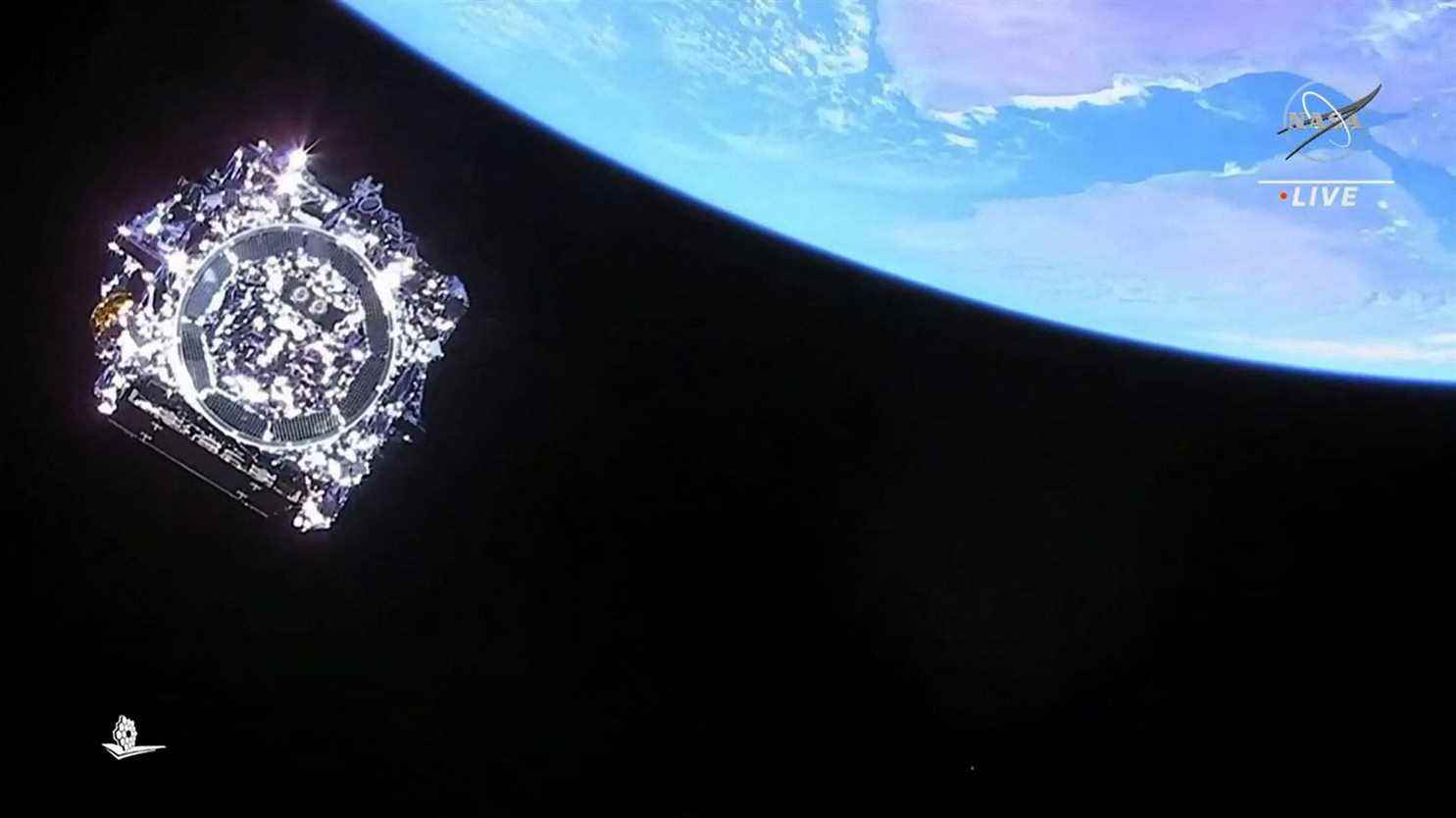This carefully chosen orbit will allow it to study the first cosmic rays via its infrared sensors.
Article written by
Posted
Reading time : 1 min.
Almost a month after its launch, the James Webb Space Telescope has reached its final orbit. Currently located 1.5 million km from Earth, it will notably be able to observe the first galaxies in the universe, NASA confirmed on Monday 24 January. It activated its thrusters at around 8 p.m. in order to reach the Lagrange 2 point, ideal for observing the cosmos. “Welcome home, Webb!”, exclaimed the boss of the American space agency, Bill Nelson, in a press release. “We’ve come one step closer to unlocking the mysteries of the universe. And I can’t wait to see the first new images of the universe from [le télescope] Webb this summer!”, he added.
At this carefully chosen orbit, the Earth, the Sun and the Moon will all be on the other side of its sun visor, which will ensure that it operates in the darkness and in the very great cold essential to the study. of the first cosmic rays via its infrared sensors.
This is the third time that the telescope has operated its thrusters in this way since its launch aboard an Ariane 5 rocket on December 25. The great impulse provided by the rocket had indeed been deliberately minimized to prevent the instrument from overshooting its target, with no real hope of returning, and it still had to, by small successive pushes, place itself there by itself.
